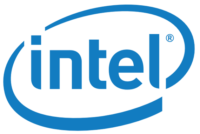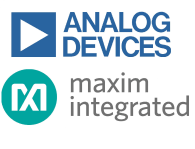Overview
Edge Computing and Edge AI significantly impact the future of technology, but like all aspects of technology, they come with advantages and disadvantages.
With business and general tech use growing at an exponential rate, innovative methods of computing and AI such as Edge Computing and Edge AI have become crucial for managing such extraordinary amounts of data.
Edge Computing contributes to this by analyzing and storing data closer to users on a local server, all without interacting with the cloud. This takes considerable pressure off centralized servers by lessening the amount of data sent to them.
In combining this technological concept with AI, Edge AI brings forth an entirely new frontier of data management.
By utilizing the advantages of Edge Computing, such as reduced latency, improved bandwidth, and offline functionality, Edge AI seeks to further the pre-existing benefits of Edge Computing, applying them in the context of AI.
As with all technology, Edge Computing and Edge AI have their positives and negatives, and it’s essential to consider these when determining whether or not Edge solutions are a good fit for a business.
How does AI perform on a user device with and without Edge AI?
Edge AI’s primary function is to utilize the available compute on a designated device to train, moderate, and implement machine learning models in the field.
Interestingly, these tasks, up until recently, have been the job of cloud technologies. In cloud computing, data is collected on a device and then transmitted to a centralized cloud server, where all processing is performed.
While cloud computing has been the go-to for a long time, it’s important to note that it isn’t a perfect system. For example, more bandwidth is required when using a cloud computing method.
On the other hand, by incorporating Edge AI into AI devices, data processing can take place on the machine itself without needing to transfer additional data elsewhere. This significantly reduces latency and bandwidth. It also decreases processing time which can tremendously impact cultivating positive user experiences.
The Benefits of Edge AI
It’s vital to know exactly what the advantages of Edge AI look like to determine how they can benefit businesses.
While some of the benefits of Edge AI have already been mentioned, let’s explain them in more detail now.
Edge AI privacy boost
Edge AI Privacy is a huge bonus because of its added security advantages. Overall, Edge AI sends less data to centralized cloud networks.
This is significant because it’s much harder to tamper with data when it never leaves the device.
Suppose the thought of having “all your eggs in one basket” is concerning (on the off chance a company may encounter a data security issue). In that case, Edge AI addresses this by storing some data away from the cloud at the Edge of the network.
On top of these benefits, if data is deemed irrelevant by an Edge AI model, it’s recognized as redundant, extraneous, and unneeded and is promptly discarded. This means that sensitive but irrelevant information isn’t available for a hacker to access.
Edge AI offers reduced latency
Edge AI takes some of the load off cloud platforms by performing on a local network. This can improve bandwidth by reducing the likelihood of bottlenecks.
Improved bandwidth efficiency means faster response times for end users.
Keeping data close also means it doesn’t have to spend as much time in transit. Aside from the tremendous security benefits of keeping data local, latency is notably reduced. As a bonus, this frees the cloud for some analytical tasks while the Edge takes care of the rest.
Edge AI Reduces bandwidth consumption
Edge AI reduces bandwidth. As more data is processed, analyzed, and stored on the local network, the cloud’s bandwidth is not overworked. Less data going through the cloud means more overall bandwidth savings. This reduces user costs and contributes to faster network speeds.
Edge AI offers improved scalability and versatility
As Edge devices become more common, they can be used for cloud-based platforms, opening up new opportunities.
Additionally, OEM (original equipment manufacturer) companies have made Edge capabilities native within their equipment, which makes scaling the system much easier. Such integrated proliferation also allows local networks to remain functional, regardless of the condition of upstream or downstream nodes.
The disadvantages of Edge AI
There are drawbacks to Edge AI functions. Before choosing to integrate Edge technologies into your business, these disadvantages are worth knowing about.
Security issues arise with Edge AI technology
Just as there is a notable security advantage with Edge AI, there’s also a risk. This risk occurs at the local level, where Edge AI primarily functions.
While cloud-level data analysis is open to any online breaching from determined individuals, human error at the local level typically affects Edge AI security.
Therefore, a company’s in-house security must be strong when opting for an Edge AI strategy. Otherwise, a company’s downfall will be human error, local applications, and insecure passwords.
Edge AI systems can lead to lost data
An aspect to keep in mind about Edge AI systems is that they discard irrelevant data (as they should), but they need a complete understanding of what is and is not relevant to do this effectively. If any dumped data is relevant, the Edge AI’s analysis will end up flawed.
An Edge AI system must be well programmed and thoroughly planned out to avoid data loss.
Edge AI offers less compute power
Edge AI lacks the full computing power of cloud-based AI. Therefore, an Edge AI-enabled device can only perform specific AI tasks.
The good news is that cloud computing can still handle larger models, while Edge AI can perform on-device interference using smaller models. Edge AI can take small transfer learning tasks, but nothing too deep.
Edge AI is hindered by machine variation
There’s a significant variation in machine types that are compatible with Edge AI programming, some of which are not so compatible with each other. Unfortunately, it’s likely for faults and failures to happen when incompatible machines work together.
Understanding Edge AI
When it comes to AI, the choice is ultimately up to the company and what they want to do with their business.
As can be seen, Edge AI has many positives, but there will be disadvantages in whatever system a company chooses to go with.
Edge AI is no different in this regard.
But, by understanding these difficulties, they will be easier to mitigate so that companies can take advantage of the tremendous benefits of Edge computing and Edge AI.












